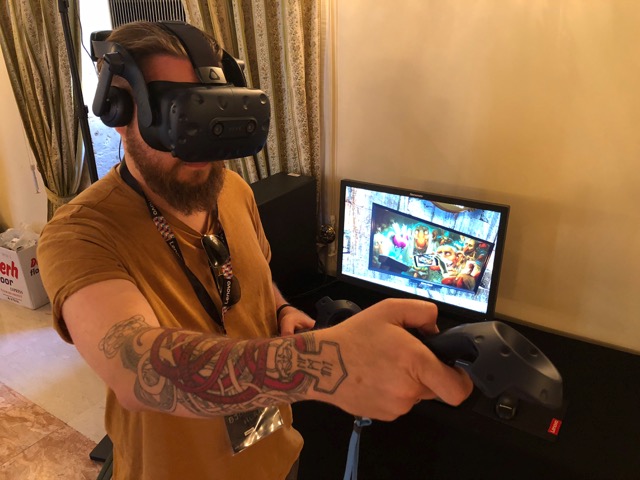
An Argument for Dragons and Unicorns in Business
Modern Virtual Reality can make the fantastic feel realistic – engaging its audience in ways nearly unachievable by traditional media. This makes it a powerful platform for businesses to build their brand and connect with their market ... but helping companies understand this power can be tough. The medium itself is widely misunderstood. Public interest fluctuates. And the technology evolves on an almost daily basis.
In some ways, the biggest challenge for those of us who create VR is building a client relationship where smart business decisions and creativity can share equal footing on a constantly-shifting platform. This often means we and our clients have to take a leap of faith into the realm of the ridiculous, where we find ourselves making the business case for dragons and unicorns.
At Horizon, we recently created an experience for Trojan Horse was a Unicorn, (THU) an annual gathering of digital creatives from around the world. Our client, Lenovo, is the primary sponsor for this event. It’s attended by talent and executives from companies like Disney, ILM, Digital Domain, Naughty Dog, and pretty much every other top-tier gaming and VFX organization. THU is where they get together to talk shop, learn from one another, and share their enthusiasm in an amazingly open, lively, and inclusive environment.
Our challenge was to come up with a concept that would fit the event naturally. Not to push product, and surely not to shoehorn in a message about hardware. This is a venue that has signs like “You can dance! You can drink! You just can’t be an asshole.” We needed to create something that felt like a natural extension of the environment and culture.
One of THU’s big features is the annual Golden Ticket Challenge, made possible through ArtStation. Every year, hundreds of THU participants submit artwork through their digital community. THU’s leaders, or ‘Knights,’ judge these entries and give awards for the top three professional entries and the top three student entries. The artwork is stunning. Every entry is worthy in its own right, so the Knights have their work cut out for them. Since this is digital artwork, these pieces are typically never seen in a traditional gallery. But we knew we couldn’t simply recreate a traditional art gallery for such an ecletic gathering - that would be way too tame. We needed to create a digital art experience for a digital artist community; an insanely creative group that can look at your work and tell you everything you’re doing wrong. We needed to get a little bit out there. So, Horizon’s Chief Creative Officer, Jason McGuigan, decided to call in the dragons and unicorns.
The Lenovo ThinkStation group gives us a lot of latitude to do some truly entertaining work. We deliver for them, and they let us push the boundaries of enterprise VR. It’s a symbiotic relationship that we’re fortunate to have. Getting them, along with the folks at THU, to sign off on the concept was the first major challenge. Fortunately, everyone felt that we had a winning idea, and our gang at Horizon was already excited for it. McGuigan had briefed the team beforehand, just to confirm that what we were pitching was even possible.
Creating the THU Golden Ticket Challenge VR Art Gallery was a thrilling adventure. For a creative, it doesn’t get much better than having a reason to say things like, “Instead of spray cans, let’s paint by squeezing baby dragons,” or, “At night we need a skeletal unicorn to appear from a lightning storm,” or even, “I’d really love it if a giant dragon came by and set everything on fire.” And this is the most exceptional thing about our team: no matter how bizarre the ideas get, they never say no, and they always deliver.
We had an absolute blast creating this experience and sharing it with the audience in Malta. And the participants showed it no end of love. Hundreds of people went through, some staying in the experience for over two hours. Groups sat around afterward and discussed what they saw, what they loved, and who they voted for. We heard it mentioned in talks, at late night events, and just randomly in the halls. To walk away from an event like this with something so universally acclaimed was a pleasure.
Our client wanted to engage a specific audience. We knew that tapping into the culture of that audience was a strong marketing strategy. At the same time, we wanted to capitalize on the strengths of our chosen medium, VR. This meant giving up some of the more comfortable conventions of traditional media. We were able to do all of this because we have a strong relationship with a client who trusts our team's expertise. That kind of relationship is not just the true barometer of a project’s success; ultimately it’s what allows you to even make the case for dragons and unicorns, in the first place.
